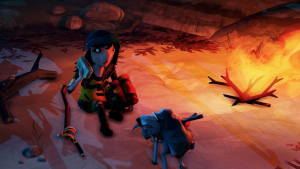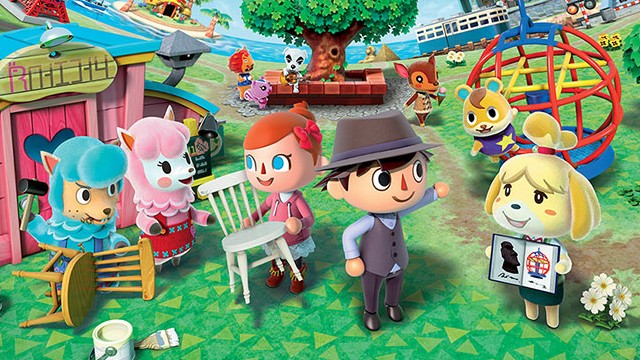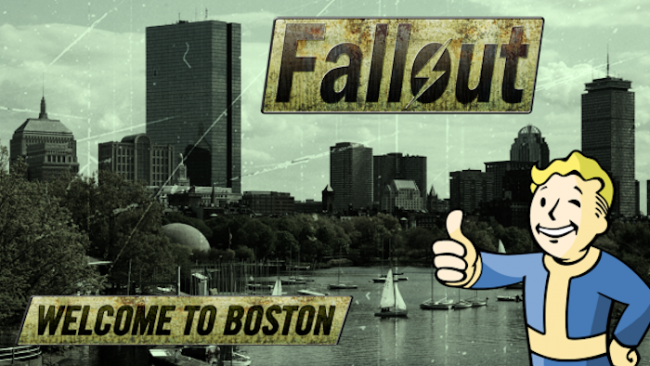I’ve been thinking a lot about The Flame in the Flood lately; I’m playing it, my husband’s playing it, even my son played a time or two. We’re all big fans of survival games, and roguelikes; we all love scrabbling to survive another adventure, another day, and the chipper, folksy music, the smooth mechanics, and bright look of icons and menus in The Flame in the Flood make this particular experience easy to pick up and hard to put down. There’s just one thing: the deaths.
Death, here, can be particularly gruesome. I’ve watched the game’s young heroine, Scout, crawl weakened across the ground, struggling even as her body is collapsing from starvations or sepsis, more times than I like to consider. It’s a horrible thing to see, knowing that food or medicine can be a simple fix, if only you can find it in the ruined world.
Not all the deaths are so bad; drowning, for one, is pretty simple. Scout’s raft collapses and it’s game over, no big deal. Not like watching the small, ruined figure stumble, broken-limbed, toward what looks like safety but may instead be certain death.
The injuries and even deaths in The Flame in the Flood are well-considered, designed to remind the player that survival in a hostile, uncivilized world, isn’t as easy as stopping at CVS for bandages. Yeah, player, you can charge through those thorn bushes to check that bus for supplies, but is it worth it? You might need that fire, but can you avoid the lurking wolves long enough to build traps to stop them from trapping you?
In so many games, these are simply cost-benefit scenarios. Do the math: do you have enough bullets? Food? Other supplies? What’ll you risk, checking that chest? Usually just a bit of a do-over, or in a less forgiving game, like this one, it might mean a serious injury. But here, you see it, too. She limps. She stumbles. You’re forced to play it out, and those considerations become more human, less calculated.
 When I first encountered the game, the surreal art style was the first thing I noticed, and I’m probably not alone in that. Scout’s angular face, the bright colors, the cartoon-shadow outlines of the wolves, the bright, rushing water of the river she travels, none of it’s real. I keep wondering if that’s the only way I can keep playing without heartbreak, if keeping it all just to the left of reality is the only thing that makes the slow death from sepsis tolerable.
When I first encountered the game, the surreal art style was the first thing I noticed, and I’m probably not alone in that. Scout’s angular face, the bright colors, the cartoon-shadow outlines of the wolves, the bright, rushing water of the river she travels, none of it’s real. I keep wondering if that’s the only way I can keep playing without heartbreak, if keeping it all just to the left of reality is the only thing that makes the slow death from sepsis tolerable.
The Flame in the Flood seems to draw heavily on Southern literary traditions; the girl and her dog travel the river on a raft, encountering an eerie cast of characters, all struggling with their own survival. Part of that, too, is a struggle to understand what’s happened, and how this world has come to be. Quilts left behind by others, along with these short encounters, help Scout stitch together a story, but how much does that story matter? How much of this life is just riding the river, choosing a destination, and moving on and on? Is that life a life worth living, worth suffering broken bones and poison ivy and who knows what else? What are we surviving for? Not for Scout’s companion, the canine Aesop; after all, he wasn’t always hers, but came to her after the death of his last master. Is that all tomorrow holds for Scout?
As I play, as much as I want to advance, I can never quite shake that undercurrent, and my fear for Scout, for every obstacle in the river, for every potential wolf or bear or boar, is real, and it’s harsh, no matter how repetitive the game gets, and there is repetition, of course; there are only so many environments and options, and the slog of survival starts to look the same no matter how it’s dressed. Here, it comes together in a game that’s hypercolored, sound-rich, a pleasure to look upon, but drive by something else altogether: the darkness and horror lying in wait for Scout around every corner. It’s always there, if not at this stop along the river, then the next, or the one after. It’ll come. It always does.




